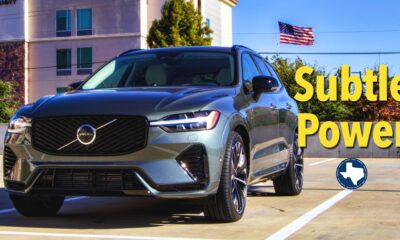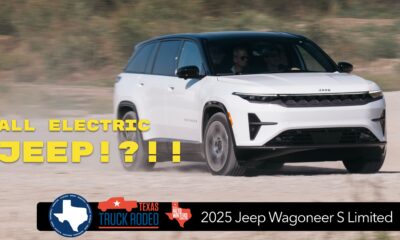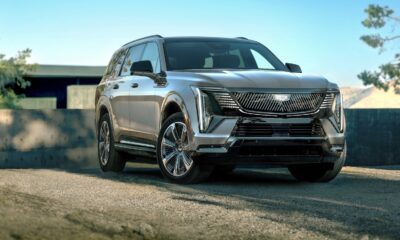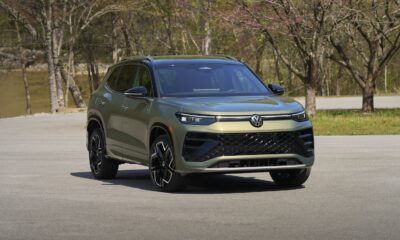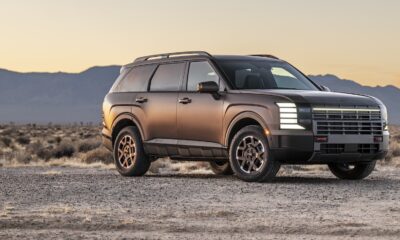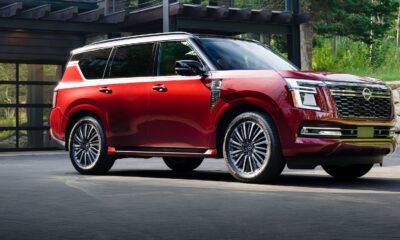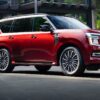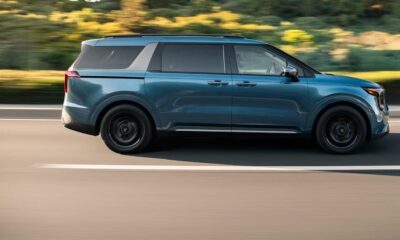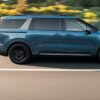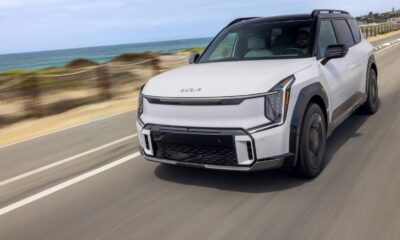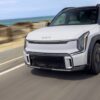Car Reviews
2025 Prius PHEV vs the EV Wave: Still Worth Plugging In?
Back in 2023, I said the Prius had finally stopped being the car you apologize for. It had grown up, gotten a real dose of style, and—shockingly—become something I actually wanted to drive. That wasn’t just a hot take. It was a turning point.
Now, in 2025, I’ve spent a full week living with the latest iteration: the 2025 Toyota Prius Plug-in Hybrid, now called exactly that (goodbye, “Prime”). I drove the fully loaded XSE Premium trim, painted in Supersonic Red, optioned with the best tech Toyota offers. And while my positive impression from two years ago still holds strong, the question today is a little different:
With electric vehicles everywhere—some affordable, some ambitious—does a plug-in hybrid like the Prius still make sense?
Let’s get into it.
Prius, Three Ways
Toyota offers the 2025 Prius Plug-in Hybrid in three trims: SE, XSE, and XSE Premium.
- The SE is your base model, priced around $32,600. It gets the best EV range of the bunch (up to 44 miles) thanks to lighter 17-inch wheels.
- The XSE steps up with 19-inch wheels, sportier looks, and upgraded materials—but loses a few EV miles.
- The XSE Premium, which I tested, is the tech-forward flagship. It includes a 12.3-inch touchscreen, JBL® audio, heated and ventilated front seats, a fixed glass roof, panoramic view monitor, and Toyota’s self-parking Advanced Park system.
You’re looking at about $44,324 for the version I drove, fully equipped.
Style Points
This is, without exaggeration, the best-looking Prius ever built. Maybe the best-looking compact car Toyota’s made in years. It sits low and long, with a sloped roofline that gives it a sportback vibe. The sharp LED lighting up front and out back adds to the futuristic aesthetic, and on 19-inch wheels, the whole package feels sleek and premium.
My test car’s Supersonic Red paint turned heads—more than once I had people ask what I was driving. That didn’t happen in the old Prius.
Smart Hatch, Not a Hauler
Open the rear hatch and you get just over 20 cubic feet of cargo space behind the seats. That’s not enormous, especially for a hatchback, and the sloping rear glass cuts into vertical space.
Still, it’s practical. The 13.6 kWh battery is stashed under the rear seats, so the load floor remains flat. Fold the seats down and you’re looking at nearly 27 cubic feet—enough for weekend bags, camera gear, or a decent grocery run.
Power operation is standard on the XSE Premium, and while there’s no spare tire, Toyota includes a tire repair kit.
The Power Surprise
You read that right: 220 horsepower. That’s what this Prius makes using a 2.0-liter 4-cylinder Atkinson-cycle engine paired with an electric motor and that lithium-ion battery pack.
That power translates to a 0-60 mph time of around 6.6 seconds, which is not just “good for a hybrid”—it’s straight-up quick for a compact car. I’m not saying it’s a hot hatch, but it’s quick enough to dart through traffic and beat most cars off the line at a red light.
More importantly, the transition from electric to gas is seamless. You get three modes: EV, Auto EV/HV, and Hybrid. Charging takes about 4 hours on a Level 2 plug, or 11 hours on 120V at home. No fast-charging here, but honestly, you don’t need it.
Quirky, But It Works
Inside, the Prius feels modern and thoughtfully tech-forward—if a little quirky.
Let’s start with the elephant in the room: the center-mounted digital cluster. It sits above the steering wheel, right in your line of sight. It’s clean and informative, but takes a bit of mental adjustment if you’re used to a traditional gauge layout.
Materials are good, though not luxury-grade. My test car had SofTex-trimmed seats with heating and ventilation up front, and even heated rear seats (an option). The fixed glass roof adds an airy vibe, especially in sunlight.
Tech-wise, the XSE Premium has it all: a 12.3-inch touchscreen with wireless Apple CarPlay and Android Auto, a JBL® Premium Audio System, and six USB-C ports. You also get wireless charging, dual Bluetooth, and Toyota’s cloud navigation with voice assistant—just say “Hey Toyota” and it responds like Alexa or Siri.
Actually Fun to Drive
This might sound wild, but: this Prius is fun to drive.
No, really. The steering is light but precise. The suspension is balanced and composed. And with most of the battery weight kept low in the chassis, it stays flat in corners.
The regenerative braking system is one of the smoothest I’ve felt in a non-Tesla. You’re never “fighting” the brake pedal. It feels natural.
Highway driving reveals a bit more wind and tire noise than I’d like, especially with the 19s. But in town? It’s refined, responsive, and just easy to live with.
EV Efficiency Meets Gas Confidence
Let’s talk numbers. In EV mode, the XSE and XSE Premium get up to 114 MPGe. Once the battery is depleted, it settles into a solid 48 MPG combined in hybrid mode.
With both electric and gas range combined, Toyota estimates about 550 miles of total range. That’s a serious road trip number—and a clear strength over full EVs that may struggle in rural or infrastructure-light areas.
Price vs Perception
As tested, my XSE Premium rings up at $44,324, including destination and a handful of options. That’s not cheap. You’re squarely in RAV4 Prime or base EV territory at that point.
And remember: because this is a PHEV, it no longer qualifies for the federal $7,500 EV tax credit (unless leased through a dealer that passes it along). So your out-the-door costs are what they are.
But consider what you’re getting: near-luxury tech, Toyota reliability, real-world EV usability, and the flexibility of gasoline backup. In that light? It’s a fair deal.
How It Stacks Up
There are two types of buyers the Prius Plug-in competes with:
- Plug-in hybrid shoppers considering vehicles like the Kia Niro PHEV or Ford Escape PHEV
- Full EV curious folks eyeing something like the Chevy Equinox EV or Hyundai Ioniq 5
The Niro PHEV offers less EV range (33 miles), less power, and a more crossover-style experience—but it’s more affordable. The RAV4 Prime offers more space and AWD, but it starts in the high $40Ks and climbs fast.
Then there’s the Equinox EV. It’s compelling: ~250–300 miles of range, DC fast charging, and tax credit eligibility. If you’ve got home charging and don’t need gasoline backup, it might be the better long-term choice.
But for those who want to straddle the line—electric driving during the week, road-tripping on the weekend—the Prius PHEV still makes a lot of sense.
Final Verdict
The 2025 Prius Plug-in Hybrid is still a fantastic choice. Even in today’s EV-heavy market, it delivers real efficiency, engaging dynamics, smart tech, and better design than almost anything in its class.
It’s not perfect. The cargo area is modest. The price climbs quickly in top trims. And the EV-only range, while good, can’t match a full battery-electric car.
But for drivers who want plug-in benefits without full EV trade-offs, this Prius hits the sweet spot. It’s cool. It’s capable. And yeah—it’s still worth plugging in.





